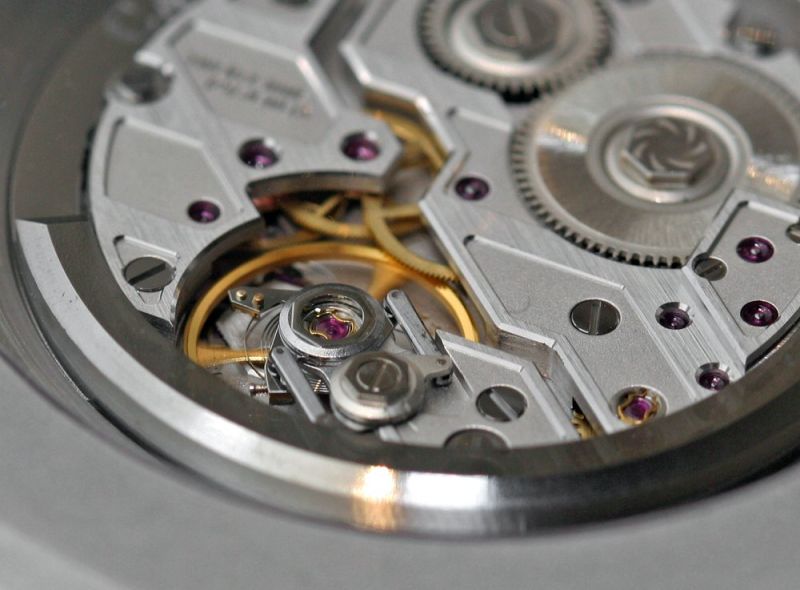
SJX
[Purist]
8540

Exciting new in-house Cal. A1000 with peripheral winding - lots of photos
At first glance the Cal. A1000 looks like a large manual-wind movement with modernistic bridge design. But upon closer examination several things emerge.

First, the calibre is wound by a rotor on its periphery. This is not an invisible rotor a la Vianney Halter, the entire rotor and windng mechanism is on the perimeter of the movement. Winding is bidirectional, and supported by three DLC-coated rollers with ceramic ball bearings. The rollers are in turn mounted in rocking bars, which protect them against lateral shocks. The wheeling wheel is fitted with incabloc shock protection on both sides, one of which can be seen on the left of the image below.


One question that came to mind when I saw it is whether the winding is efficient, given the size of the rotor. David Vallata assured me it was; the rotor is made from dense tungsten (fusion anyone?). When fully wound, the calibre has a more than sufficient 55 hour power reserve, making it possible to add various complications while maintaining adequate power reserve.


Because of the fact that the bridges are entirely free of obstruction, one can add complications to the top of the movement as well, and not just modules to the dial side. This could leave the way open for an interesting integrated chronograph.
The other interesting feature in the movement is what the brand calls Central Dual Adjusting System (CDAS), which some posters have noted is reminiscent of two people dancing in my earlier thread (click here to see it).

The advantage of this regulator is that the adjustment is easier because the use of the two arms which gears down the turn ratio. That means tiny adjustments can be more easily made by turning the screw which moves the arms as compared to a traditonal regulator. The regulator is interesting and probably makes assembly and regulation easier, but it is not groundbreaking unlike the peripheral winding.


The balance is a standard Glucydur balance with Nivarox hairspring, hardly inspirational stuff. But that was a conscious decision for reasons for reliability and price. The balance assembly has to be practical, in terms of reliability - Nivarox and Glucydur are tried and tested - and it also has to be suitable for large scale production.
I commented to David Vallata that often in-house movements are unreliable and the first few produced will almost certainly have to be returned to the manufacturer; he replied that was precisely why Carl F. Bucherer decided only to make changes where it is was necessary and practical, namely the winding and regulation mechanisms, leaving the rest of the movement wholly conventional.
The techniques used to decorate of the movement are also conventional, though the design is clearly modern. No PVD coating or carbon fibre bridges, the bridges have contrasting matte and frosted finishes, as well as bevelled edges. Although this was a prototype, the finishing was well done for a calibre that is destined to become a mass produced workhorse. Carl F. Bucherer's intention is to strike a balance between traditional finishing and large scale production, which is also what many revered brands like IWC and JLC are clearly doing, whether they admit it or not.
The main goal in developing the A1000 is to create a reliable base movement that can be used to power other complications, while at the same time being innovative and not create a Valjoux clone. The resulting 29 jewel, 13'" movement with 55 hour power reserve accomplishes that nicely. It remains to be seen how Carl F. Bucherer puts this movement to use but it has a lot of potential and I look forward to the finished watches at Baselworld 2009.
The informative movie on the Carl F. Bucherer site (click here to see it) explains the movement well and is well worth watching, but be patient for the first couple of minutes which consists of pure marketing speak and inane graphics.







An outsider brand, Carl F. Bucherer, and its innovative new in-house calibre

Yes. SJX's observations are correct. THIS is a movement of great importance.

not the first, but possibly the last...

How can winding efficiency be quantified or tested in the industry?

I know of no universally agreed upon testing methods
further technical observations



